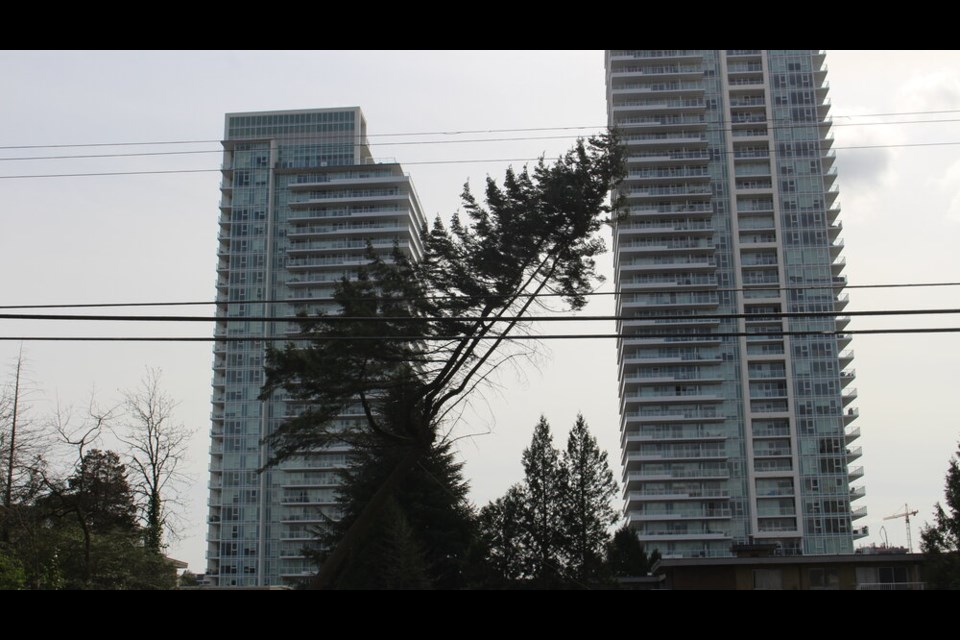A Coquitlam woman is mourning the loss of 34 roughly 100-foot trees a developer is cutting down to make room for a 29-storey residential tower.
With the high-density development at 520 Cottonwood Ave. in the early stages of pre-construction, crews have spent the last few days downing several old coniferous trees. But when and how the trees are being removed has neighbour Christine Coles worried.
“There was a flicker nest in the last one they cut down. My boyfriend and I heard the male chirping above us, and when the chainsaw hit the tree a mama bird flew out horizontally onto the side of the building beside it,” said Coles in an email to the Tri-City News.
“She was protecting something, she sat there until the chainsaw hit her tree.”
Cole said after years of feeding the birds, she's sure that 'something' was a nest, noting that the Northern Flicker nests in hollowed out tree cavities that might not be visible from the ground.
The whole incident, she said, left her "sobbing."
According to the city of Coquitlam’s website, the bird nesting window runs from March 1 to Aug. 31, and to remain in compliance with section 34 of the B.C.'s Wildlife Act, “tree removal during this period must ensure no nests or nesting birds are disturbed.”
“If tree removal is required during this time period, the site should be reviewed by a Qualified Environmental Professional (QEP) registered as a Professional Biologist and any reports submitted to the City to ensure no nesting birds are disturbed,” states the city.
Andrew Merrill, Coquitlam’s director of development services, said the developer hired a registered biologist to survey the trees slated for removal. Contrary to Cole, the report indicated there were no nests or nesting birds in the trees and permission was given to remove the old conifers between April 4 and 12.
“We trust that the registered professional biologist did the work as per the legislation that governs them,” said Merrill, adding residents who believe they’ve witnessed a breach of the Wildlife Act or Migratory Birds Convention Act should contact the appropriate provincial and federal authorities.
A CHANGING URBAN CANOPY
City bylaws require developers to assess the impacts to neighbouring trees and mitigate any removal.
According to Ledingham McAllister’s development application, the new tower at 520 Cottonwood Avenue will include 55 on-site replacement trees, all deciduous. (Cole, however, described some of the replacement trees already planted as “piddly” and questioned, “How is this like for like?”).
With much of Coquitlam’s future high-density development concentrated around SkyTrain stations, the nature of the city’s urban canopy is changing in neighbourhoods like Burquitlam.
“At a big scale, Coquitlam is obviously a very fast-growing municipality,” said Merrill. “We’re limiting urban sprawl and protecting forests outside the contained urban areas.”
Merrill added that the city works year-round to replant and add trees alongside roads and in green spaces. City staff are also currently drafting a report to revamp the city’s Environmental Sustainability Plan, something Merrill describes as the next step to “evolve the city’s urban forest management practices.”
Cole, meanwhile, said she's reported what she witnessed to the province's RAPP line but has yet to hear back.



